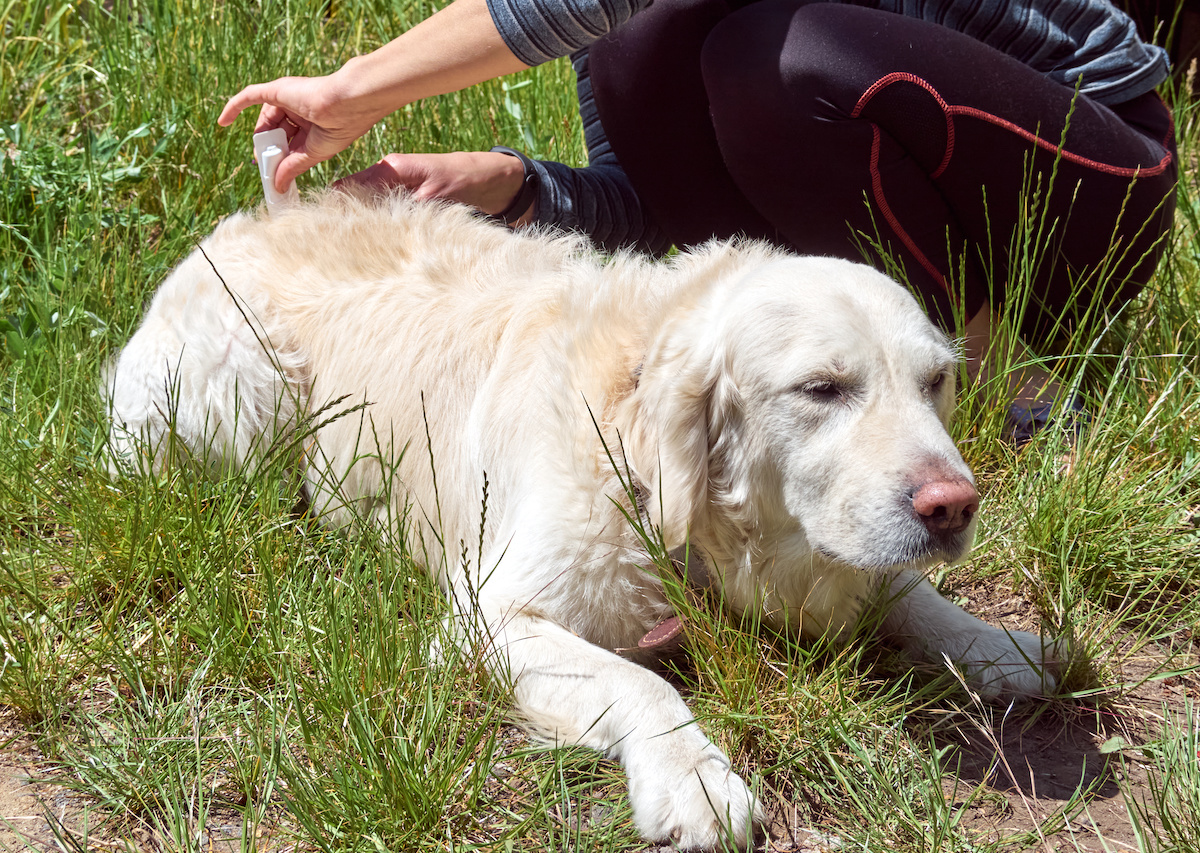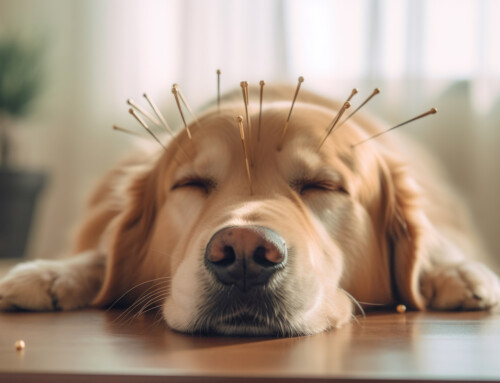In Georgia, flea and tick season is a year-round event. However, the hot summer sun makes it seem even more dreadful when pets are suffering from ticks and fleas. Flea and tick prevention is a must when you live in the south!
There are methods to prevent fleas and ticks all year long, not just during the summer. This survival guide will explain how to keep fleas and ticks away from your pets. We will also teach you how to eliminate them if they invade your home.
Why is Year-Round Flea and Tick Prevention Important in Georgia?
There are several things you can do to prevent fleas and ticks from infesting your home or pet. However, it is crucial to remember that flea and tick prevention is imperative. Not only will your pet feel miserable without it, but you must also consider the health risks associated with flea or tick bites.
Unfortunately, these insects can spread a number of diseases to both pets and humans. According to the CDC, these are several diseases that are brought upon by fleas and ticks alike.
Tickborne Illnesses
Tickbourne illnesses are caused by infection with the saliva of ticks. These infections can be serious and even fatal. They happen when a tick bites an infected animal, such as an animal that has been sick or has just died, or when an infected tick bites a person.
A number of diseases are caused by ticks. This includes Lyme disease, anaplasmosis, babesiosis, ehrlichiosis, tularemia and Rocky Mountain spotted fever.
Tickborne illnesses can cause fever, headache, muscle aches, nausea, vomiting and rash. They can also lead to joint pain and arthritis. In people with weak immune systems who have not been previously exposed to tickborne diseases, these illnesses can be deadly.
Tickborne illnesses are most common in wooded areas where there are ticks (like forests). People and pets who spend time outdoors should check themselves for ticks frequently.
If you find one on your body and remove it as soon as possible (with tweezers or a pair of fine-tipped scissors), you will prevent infection. You should also wear long pants tucked into socks when you are in grassy fields or wooded areas because tick nests may be hidden in tall grass or weeds.
A monthly tick prevention routine for your pet can help stave off ticks all year long.
Fleaborne Illnesses:
Fleaborne illnesses are diseases that are caused by a parasite. Fleas are insects that can be found on dogs, cats, and other animals. Humans can catch the plague, flea-borne murine typhus, cat scratch disease, and even tapeworm from fleas.
How to Prevent Fleas and Ticks on Your Pets
There are many choices for protecting cats and dogs against ticks and fleas. they come in a variety of prices. However, you must choose the right product carefully. Main Street Vet can help you choose the right flea prevention method for your pet.
Your pet can receive flea and tick protection in several ways, including:
- Topical applications
- Monthly pills
- Collars
There are some applications that kill fleas at different stages of their life cycle. This includes adult fleas or flea eggs. Some options, on the other hand, will eliminate all phases of flea infestations.
Fleas and ticks are resilient creatures and it’s difficult to remove them if they get inside your home. The best approach is to eliminate all flea generations. Unfortunately, if only one of them is eliminated, the other one will still survive and reproduce. It’s a very difficult cycle to stop.
Your veterinarian can provide guidance if you’re unsure which type of flea and tick medication is best for your pet. Be aware that flea medications can cause seizures as well as side effects. If your pet experiences side effects, see your veterinarian immediately.
Comforting a Pet with Flea Bites
Pets’ skin can become red and irritated after being bitten by fleas. But how do you make them feel more comfortable? One idea is to give your dog or cat a fragrance-free shampoo to help reduce inflammation.
Vet’s Best Flea Itch Relief Shampoo and Tropiclean Flea and Tick Bite are two popular options. You’ll want to choose a shampoo for your pet that contains oat protein, aloe, or tea tree oil. Letting the shampoo stay on the skin for 10 minutes before rinsing is key.

How to Get Rid of Flea Infestations
Infestations with fleas can be both physically and emotionally draining. Fleas start with your pet and then move on to you when they are looking for another meal. It’s a miserable experience for the whole family.
It is possible to eliminate flea infestations, but be aware that it may take time. The most difficult phase is terminating the flea life cycle, where an adult flea develops from an egg, a larva, a pupa, and so on. All phases must be terminated to finish the infestation.
We suggest treating your home by an exterminator if you are unsuccessful in eliminating the infestation. You must remove your pets from the house while you leave. You may notice a temporary strange odor in your house when you return. However, it will be dry and safe once you get there.
It’s important to remember that some exterminators guarantee to get rid of fleas within one visit. They may return for a free treatment if they are unsuccessful. Verify this with your exterminator prior to them arriving at your home.
How to Prevent Ticks on Your Pet (and Yourself)
Now that you have an idea of how to prevent fleas and get them out of your home, how do you handle ticks? Tick bites can be prevented through other measures.
Preventing tick bites is important, but it’s best to take as many precautions as possible to prevent bites, which is also beneficial to humans.
- Be cautious when you are outside to see if you are entering a tick-infested area. Ticks inhabit wooded areas, particularly areas with a lot of tall grass or leaf litter. You may also find ticks in your own backyard.
- You can use permethrin, a 0.5% solution, on your clothes if you’re going camping, hiking, or spending time in the woods. When treating your clothes, avoid using products that contain permethrin higher than 0.5%. It can be used to treat boots, clothing, and camping equipment. Do not apply this to your pet as a flea and tick prevention. But make sure they receive a monthly flea and tick treatment before leaving the house. Learn more on how to properly use permethrin by clicking here.
- Generally, you should avoid wooded areas with high grass or leaf litter. If you choose to walk outside on an untreated path, stick to the centre of the trail.
Make sure to examine your entire body, particularly your clothes, after you return home. Examine your hair (particularly if it is long), your ears, and your scalp. Look at your hands, particularly your fingernails. Check your children for ticks as well.
Particularly if you went hiking or camping, check your pets carefully.
Ticks prefer to nestle in a dog’s belly, groin, ears, and armpits.
Found a Tick? Here’s How to Remove it
The first thing to remember if you or your pet have a tick is not to panic. Although finding a tick burrowing into the skin is scary, there are safe ways to remove them.
- Attempt to grasp the tick as close to the skin as possible using clean, fine-tipped tweezers.
- Pull up on the tick with consistent, even pressure. Do not twist or jerk the tick. This may cause the mouth components to snap off and remain in the skin.
- If this occurs, remove the mouth parts with surgical tweezers.
- When you cannot remove the mouth with tweezers, let the skin heal without intervention.
- Clean the bite area and your hands thoroughly with rubbing alcohol or soap and water after removing the tick.
To get rid of a live tick, don’t crush it with your fingers. It is best to:
- Drown it in rubbing alcohol.
- Putting it in a sealed bag/container,
- Tape it up in duct tape or scotch tape
- Flush it down the toilet
Main Street Vet is here to assist you if you need help with flea and tick prevention this year. Our knowledgeable team can help you handle your pet’s flea and tick bites as well as provide him with some comfort. Please contact us today to arrange an appointment.








